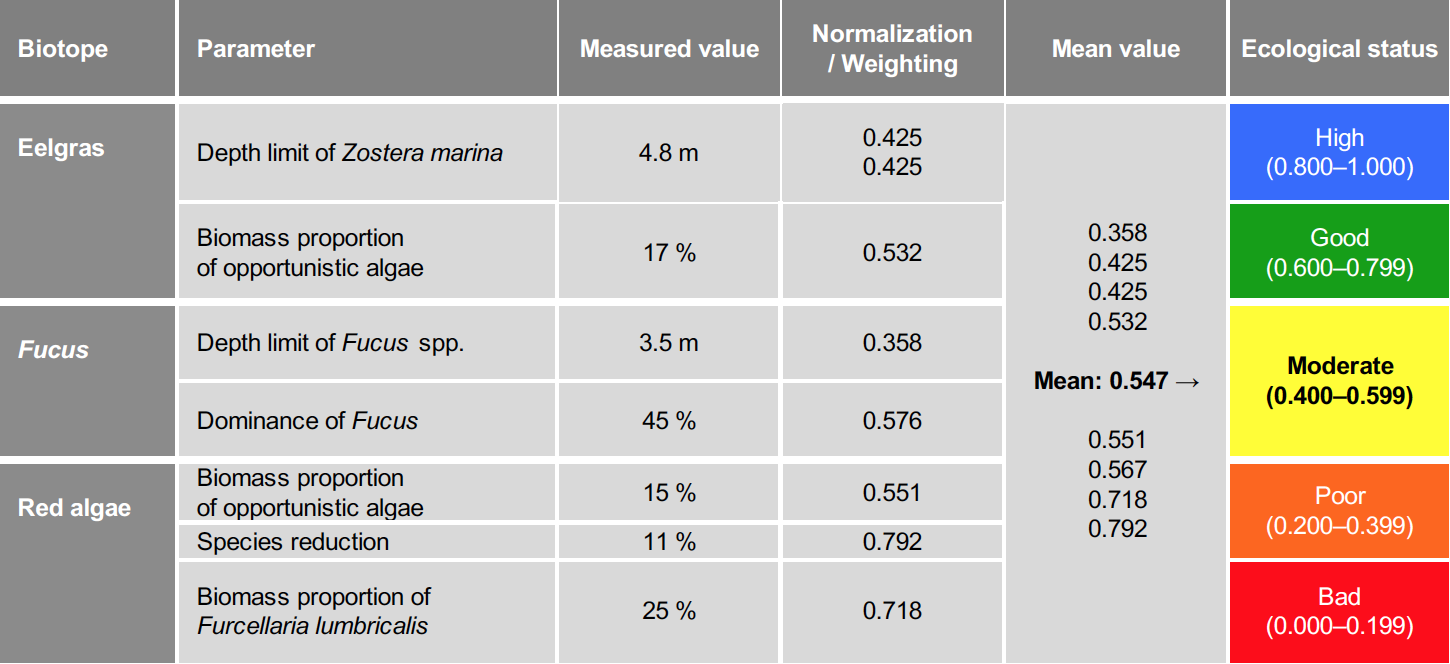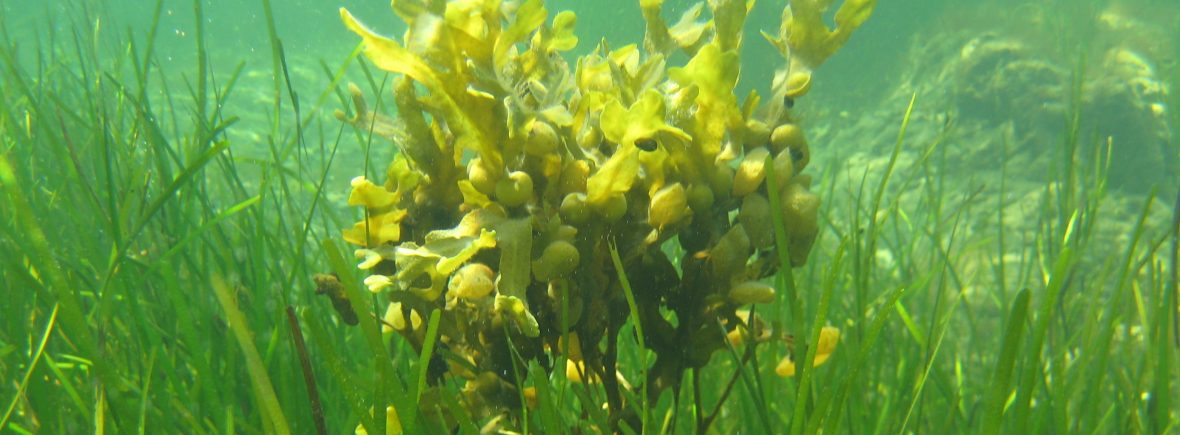BALCOSIS consists of a total of seven individual parameters and is designed as a modular, multimetric index. Each of the parameters have their own five-tier classification developed on the basis of historic information, modelling and/or expert judgement (see illustration below). Thus, each parameter can be individually and independently evaluated in terms of its ecological status. The final EQR value (Ecological Quality Ratio) of BALCOSIS is obtained by calculating a weighted arithmetic mean from the individual parameters’ results. As these parameters assess different variables (proportion of biomass, species richness, coverage, depth limits) and use different class boundaries as well as value ranges, they have to be normalized to an interval of 0–1 before they can be averaged. All parameters are used for the final calculation but using different weighting factors. The scientific data basis for the parameter depth limit of Zostera marina is better than for the other parameters and subsequently this parameter uses a weighting factor of two. The modularity of the system allows exchanging or omitting single parameters without invalidating the whole assessment procedure.
The currently valid requirements for field survey, data analysis and evaluation of BALCOSIS are described in the guidance document (Nickel et al. 2019) in detail and are also listed in the monitoring manual (in German only) of the German federal and state monitoring program (BLMP).
 How the assessment system BALCOSIS is to be used is described on the website Waters assessment.
How the assessment system BALCOSIS is to be used is described on the website Waters assessment.

